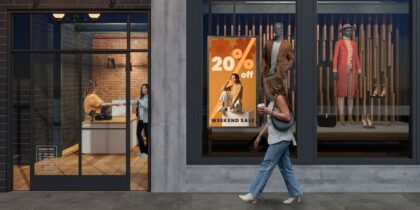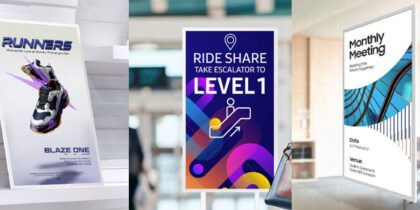Retailers should be thinking about both millennials and Generation Z as they create retail strategies in the coming years. While both generations share an affinity for technology, there can still be stark differences in what will work for a 34-year-old and a 15-year-old. Lumping both generations in the same category could be a recipe for disaster.
A New Generation Brings New Shopping Behaviors
While the spending power of teenage consumers may not be critical now, it will be in the coming years. An HRC Retail Advisory report noted that by 2020, consumers ages 10 to 17 are expected to comprise 40 percent of the North American population.
HRC said recognizing the differences between generational segments and understanding the implications of Generation Z’s influence will be critical in serving the group. The shopping behavior of Generation Z is especially important because 82 percent of them are already influencing their parents’ purchasing decisions. In contrast to millennials, they also prefer YouTube over Facebook, regularly visit malls and say their friends — not celebrities — are the most influential part in their purchase decisions.
Farla Efros, president of HRC Retail Advisory, said that retailers must be “nimble” to effectively appeal to these consumers, and that resonating with the group at a young age can have a big impact on long-term customer loyalty and retention.
“Social media and digital advertising will be dominant in marketing strategies targeted to Generation Z, but retailers must adopt these mediums in interactive ways to inspire and engage this emerging generation,” says Efros.
A survey by Piper Jaffray found that as much as 33 percent of teens prefer Instagram over Twitter (20 percent), Snapchat (19 percent) and Facebook (15 percent). Jill Standish, senior managing director of Retail for Accenture, told Retail Touchpoints, “it is all about visual content” for Generation Z.
Members of the latest generation are the first “digital natives” born in the age of internet and e-commerce. A study by National Retail Federation found that these digital natives are more likely to surf the web on their phones than watch television or hang out with their friends. They’re also more demanding, with 65 percent expecting to get “a lot more” for their money and having little patience for out-of-stock merchandise. And far more than millennials, a whopping 98 percent of Generation Z still enjoy shopping in physical stores.
Retailers will need to be diligent as they increasingly try to serve the needs of both millennials and Generation Z at the same time through multiple retail strategies, according to Matthew Shay, president and CEO of the National Retail Federation. “With technology constantly evolving but some shopping habits remaining the same, retailers need to be agile enough to serve both needs,” said Shay.
Adapting Retail to Millenials
Read the eBook to learn how to meet the expectations of a new generation of technology users. Download Now
Readying Retail for Generation Z
Generation Z will challenge retailers to create highly personalized and interactive experiences that utilize the latest digital technologies. Marcie Merriman, executive director of growth strategy and retail innovation at EY, told Business Insider that “from a spending perspective [teens] are millennials on steroids.” She said their tastes and preferences can change almost instantly, a reason why some retailers that were very popular with teens just a couple of years ago are now filing for bankruptcy.
HRC Retail Advisory said there are a few factors retailers should consider to most effectively meet the shopping behavior of Generation Z customers. They should depict them as diverse, communicate with content more frequently in short bursts, allow them to personalize, give them control and talk to them about values and social causes. Finally, retailers should also worry less about Hollywood celebrities and use real people or YouTube stars to market their brand.
EY’s own study on Generation Z found this generation looks beyond price for things like free delivery and other services that may come along with it. And although both generations shop heavily online, they do so for different reasons. While the majority of millennial respondents said they shop online to “save time,” Generation Z said they largely do so “because the selection is better.” Merriman said if a teen is coming to the store, it’s not just because they want to buy a product, it’s because they have a problem or care more about the experience.
Retailers who want to stay relevant with Generation Z need to not only be flexible and adaptable, but also ensure they’re using the right social media channels.
“Retailers are responding by gaining appealing spokesmodels for their brand and making them come alive through social media. This generation likes to ‘follow’ these brand ambassadors on Twitter and YouTube to get inspired,” said Standish.
Technology is helping retailers change how consumers interact with businesses on a daily basis. Get a deeper look at innovations influencing this change.









